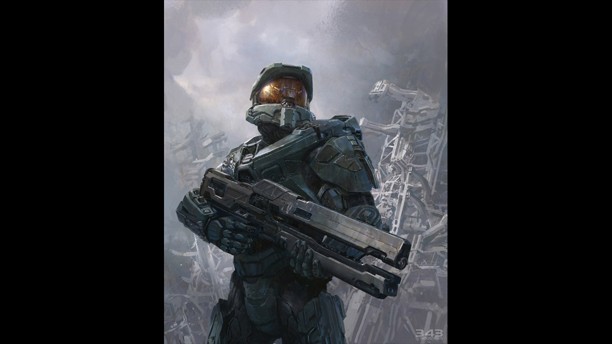Call of Duty
With the recent release of two new games from the biggest, first-person shooter franchises in the video game industry, people all over campus will forgo everything else to play them. 343 Industry’s “Halo 4” and Treyarch’s “Call of Duty: Black Ops II” debuted to sales in the millions on the first night, but which one is the one to play?
Sorry non-gamers, your friends and loved ones are probably retreating into their rooms for the next month because of this game. Despite its relatively unchanged presentation, Call of Duty games continue to be the most-anticipated releases by casual and hardcore gamers alike. “Black Ops II” is no different.
Treyarch does a great job with the multiplayer — arguably the only thing that matters to Call of Duty players — and an infinitely better job with its campaigns when compared to “Modern Warfare.” This time around, though, Treyarch outdid itself.
Since “Black Ops II” is set in 2025, the weapons are as modern — or more so, kind of — than “Modern Warfare,” doing away with the biggest argument against “Black Ops.” Not much has really changed concerning weapons, though, and the differences are all in the details.
The load-out screen has undergone a massive overhaul. Instead of limiting players to choices between certain set options, players now have 10 slots to fill with whatever they want. Do you want extra perks? Drop your secondary and that’s fine. Don’t need any secondary grenade? Put another add-on to your primary weapon. It’s a good change that makes things far more customizable.
Unlocking items is new now, too. This time around, a player earns tokens, used to gain access to new gear. Advanced stuff is still revealed over time as you level up, but it lets players choose what’s important and is an improvement over the original “Black Ops” cash system.
The maps are the best thing about the multiplayer, though. Not only are they all relatively diverse and visually exciting, they’re well balanced and, well, just awesome.
Unless there’s something I’m missing, zombies aren’t what they used to be. The basics are the same, but the maps are smaller and have a different focus. It’s more about running in circles and not running into the dozens of fires all over the maps, which seems to be the new theme.
The campaign is good, as usual, but nothing particularly noteworthy. Developers shouldn’t really get praise for doing their job, which is releasing a good, well-rounded game. But it is nice to see Treyarch continuing to try hard.
Gadgets make the campaign more fun than the last time around, but the actual story continues to be over the top and a bit unrealistic. Some interesting questions are raised, however, about technology and its role in society, so at least there’s some thinking involved.
If you want to play the multiplayer for hours on end until three days go by, and forget what the sun looks like, play “Black Ops II.”
Halo
The Halo series is far less oversaturated between the two, and more exciting on the surface. The campaigns are always miles ahead of anything the competition puts out and the multiplayer offers a completely different experience from Call of Duty. “Halo 4” is no different.
With the Master Chief back in the spotlight for the first time since 2007, things are much better. “Halo: Reach” was a nice pit stop, and Noble 6 made a good protagonist with an important job to do, but no one does it like John-117.
343 Industries took a bit of a different route in creating the story than Bungie, though, trusting the player to keep up with the rapid developments. There aren’t as many explanations, but that sense of slight confusion is one of the main driving forces behind the campaign.
What is the other driving force? More visually stunning, musically beautiful and entertaining gameplay. Running around Requiem and confronting the new enemy — the Didact and his Prometheans — presents a new aspect to Halo which is much appreciated.
For the best experience, play with four friends on the Legendary difficulty. While the intensity has been turned down a bit by the ease of respawning after death, it’s still a blast getting the group together and cutting through some aliens as the universe’s biggest bad ass.
While the campaign is on center stage for “Halo 4,” the multiplayer is nothing to ignore. In fact, it’s what some gamers have been looking forward to the most. Fortunately for them, online multiplayer is as strong as it ever has been.
All of the classic game modes have returned in “Halo 4,” but a lot has changed. The guns are a bit different, as usual, but being able to choose from multiple, pre-loaded weapon classes changes everything.
Instead of everyone starting off with relatively the same weapons and racing across the map for the best replacements, the ideal strategy has changed. Headshots and movement are still the keys to surviving and slaying alike, but there’s less of a reason to stalk around the map for prey.
The main reason things have changed is the introduction of ordinance drops, which give the players a choice between getting a number of better weapons or temporary boosts after racking up a certain number of points. This means that, eventually, assuming you kill enough people, there’s going to be a good gun coming your way at some point, regardless of where you go.
Some have claimed the multiplayer is too similar to Call of Duty, but critics are wrong. Sure, you’re shooting at people, and yes, you can choose between multiple classes, but they’re fundamentally different.
If you want a balanced night with friends and to switch between the campaign and multiplayer equally, play “Halo 4.”
Follow us on Twitter @wildcatarts and follow Jason @Jason_Krell.









